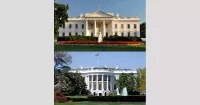Sudan, officially the Republic of the Sudan, is a country in Northeast Africa bordering seven other countries and the Red Sea. With a population of approximately 50 million as of 2024, it is Africa's third-largest country by area, covering 1,886,068 square kilometers. Khartoum serves as its capital and most populous city.
1905: Sultan Yambio Ends Struggle with British Forces
In 1905, Sultan Yambio ended his struggle with British forces occupying the Kordofan region.
1914: Sir Reginald Wingate Occupies Sudan
In December 1914, Sir Reginald Wingate was sent to occupy Sudan as the new Military Governor, following a formal end to Ottoman rule.
1924: British Policy of Separate Territories
From 1924, the British had a policy of running Sudan as two separate territories: the north and the south.
1925: Formation of the Sudan Defence Force
In 1925, the Sudan Defence Force was formed.
1927: Death of Saad Zaghloul
In 1927, Saad Zaghloul died, frustrated in his ambitions for a single Egyptian-Sudanese state.
1928: Peak in Sudanese Government Revenue
In 1928, the Sudanese Government's revenue reached a peak at £6.6 million.
July 1936: Signing of the Anglo-Egyptian Treaty
In July 1936, Muhammed Mahmoud brought Wafd delegates to London to sign the Anglo-Egyptian Treaty, allowing the British Army to return to Sudan.
1940: Italian Troops Occupy Kassala
In 1940, Italian troops occupied Kassala and other border areas from Italian Somaliland.
1942: SDF Participates in Invasion of Italian Colony
In 1942, the SDF participated in the invasion of the Italian colony by British and Commonwealth forces.
1952: Egyptian Revolution and Sudanese Independence
In 1952, the Egyptian revolution marked the beginning of the march towards Sudanese independence.
1952: Egyptian Revolution
In 1952, the Egyptian revolution toppled the monarchy and demanded the withdrawal of British forces from Egypt and Sudan.
1953: Egypt Abolishes Monarchy
In 1953, Egypt abolished the monarchy, with new leaders believing that abandoning claims of sovereignty was the only way to end British domination in Sudan.
January 1956: Sudan Declared an Independent State
On January 1, 1956, Sudan was declared an independent state.
January 1956: Sudanese Flag Raised
On January 1, 1956, the Egyptian and British flags were lowered, and the new Sudanese flag was raised by Prime Minister Ismail al-Azhari.
1956: British Policy of Separate Territories
The British Policy of running Sudan as two separate territories ended in 1956, when Sudan became independent.
May 1969: Coup d'état Led by Gaafar Nimeiry
On May 25, 1969, a coup d'état led by Col. Gaafar Nimeiry resulted in the abolishment of parliament and outlawing of all political parties.
July 1971: Briefly Successful Coup Led by Sudanese Communist Party
In July 1971, a briefly successful coup led by the Sudanese Communist Party occurred, followed by Nimeiry's restoration to power.
1972: Addis Ababa Agreement
In 1972, the Addis Ababa Agreement led to a cessation of the north-south civil war and a degree of self-rule.
1972: Government Plans to Export Food and Cash Crops
In 1972, the Sudanese government became more pro-Western and made plans to export food and cash crops.
1976: Ansars Mount Unsuccessful Coup Attempt
In 1976, the Ansars mounted a bloody but unsuccessful coup attempt.
July 1977: Nimeiry Meets with Ansar Leader
In July 1977, President Nimeiry met with Ansar leader Sadiq al-Mahdi, opening the way for a possible reconciliation.
1978: IMF Negotiates Structural Adjustment Program
In 1978, the IMF negotiated a Structural Adjustment Program with the Sudanese government.
1983: Application of Islamic Laws
From 1983, Islamic laws were applied in Sudan.
June 1989: Military Coup Led by Omar al-Bashir
On June 30, 1989, Colonel Omar al-Bashir led a bloodless military coup, suspending political parties and introducing an Islamic legal code.
1989: Military Dictatorship Led by Omar al-Bashir
In 1989, a 30-year-long military dictatorship led by Omar al-Bashir began in Sudan.
October 1993: al-Bashir Appoints Himself President
On October 16, 1993, al-Bashir appointed himself "President" and disbanded the Revolutionary Command Council.
1996: General Election
In the 1996 general election, al-Bashir was the only candidate by law to run for election and Sudan became a one-party state.
2000: Dissolution and State of Emergency
Before the 2000 presidential election, al-Turabi introduced a bill to reduce the President's powers, prompting al-Bashir to order a dissolution and declare a state of emergency. Hassan al-Turabi was jailed later that year.
February 2003: Arms Taken Up in Darfur
In February 2003, the Sudan Liberation Movement/Army (SLM/A) and Justice and Equality Movement (JEM) groups in Darfur took up arms.
2003: Ethnic Genocide in Darfur
From 2003, ethnic genocide occurred in Darfur.
2011: Independence of South Sudan
In 2011, the long-standing civil war between the Islamic North and the Animists and Christians in the South led to the independence of South Sudan.
2018: Protests Erupt Demanding Bashir's Resignation
In 2018, protests erupted in Sudan demanding Bashir's resignation.
April 2019: Coup d'état and Imprisonment of al-Bashir
In April 2019, protests demanding Bashir's resignation resulted in a coup d'état, leading to Bashir's imprisonment.
2020: Sudan Becomes a Secular State
In 2020, Sudan transitioned from a state religion to a secular state.
2020: Ethnic Genocide in Darfur
The ethnic genocide that started in Darfur in 2003 ended in 2020.
2024: Sudan's Ranking on Human Development Index and GDP
As of 2024, Sudan ranks 170th on the Human Development Index and 185th by nominal GDP per capita.
2024: Sudan Population and Development Index
In 2024, Sudan has a population of 50 million people and ranks 170th on the Human Development Index.
Mentioned in this timeline

Donald John Trump is an American politician media personality and...
Nigeria is a West African nation the most populous in...

The Sudanese conflict in South Kordofan and Blue Nile fought...

Barack Obama the th U S President - was the...
Saudi Arabia officially the Kingdom of Saudi Arabia KSA is...
Africa is the second-largest and second-most populous continent comprising of...
Trending
22 minutes ago New Zealand seals ODI series victory against England with five-wicket win.
22 minutes ago Troops to receive paychecks despite shutdown; Vance addresses pay discrepancies this week.

23 minutes ago Jayden Reed Injury Update: Packers WR Setback and Recovery Timeline

23 minutes ago Tyler Perry's $100K Donation: Bishop Winans' Church Controversy and Roberta McCoy's Donation

1 hour ago Taylor Sheridan Leaves Paramount for Billion-Dollar Deal with NBCUniversal: Yellowstone's Future Uncertain

1 hour ago Austin Dillon: A NASCAR Driver's Profile and Career Overview
Popular

Gavin Newsom is an American politician and businessman currently serving...

The White House located at Pennsylvania Avenue NW in Washington...

George Soros is a Hungarian-American investor and philanthropist with a...

Doug Ford is a Canadian politician and businessman currently serving...

XXXTentacion born Jahseh Dwayne Ricardo Onfroy was a controversial yet...

Bernie Sanders is a prominent American politician currently serving as...